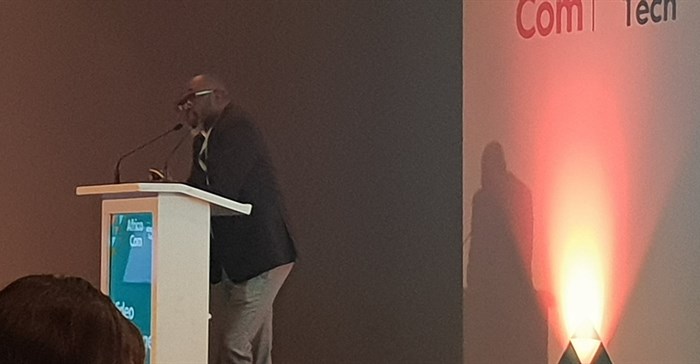Over the top television (OTT) has disrupted the way we experience content: visually, auditory and in several other ways, said John Ugbe, CEO of Multichoice Nigeria, speaking at Video Exchange Africa at AfricaCom last week in Cape Town.

John Ugbe.
Over the top (OTT) refers to film and television content provided via a high-speed internet connection rather than a cable or satellite provider. Ugbe was delivering a keynote on the Opportunities, Challenges, Roadmap and Future of OTT in Africa, at Video Exchange Africa, a co-located conference within the mammoth AfricaCom annual series of conferences and events which takes over the Cape Town International Convention Centre (CTICC) in November every year, as Africa’s biggest technology, media and telecoms event.
“I’m not really the OTT guy, I’m more of a paid-TV guy. But whether it’s OTT, traditional, cable… at the end of the day you want consumers to pay for TV. So, it’s all pay-TV at the end of the day,” quipped Ugbe.
“In the not too distant past, audio visual content reached homes only through a television set. Audiences could view a limited number of channels at their scheduled time, as a family on a single TV. OTT has disrupted the way we experience content.”
Looking at the African continent, Ugbe said it was important to highlight that while the United States was ahead, OTT in Africa was growing, with Showmax, Iroko TV, Hulu and Netflix already on the continent. The rise of OTT development in the African market is driven by a mix of international and local providers.
And because access for Africa is mostly through mobile and it is a large continent, the potential for growth is Africa is massive, he pointed out, comparing weekly smartphone usage to demonstrate the potential for growth on the continent for OTT content accessed via mobile.
Opportunities and challenges
These are the opportunities for broadcast content in Africa, Ugbe outlined:
- Africa has the third largest number of international users of OTT services: 39.8% penetration.
- “Mobile broadband” or 3G or higher, is forecast to grow from 48% in 2018 to 95% in 2025.
- Mobile is dominant and that will influence the deals you are trying to do. Fixed broadband penetration is not projected to grow as fast as mobile. There won’t be massive development of fixed-line infrastructure, so any content strategy needs to be driven by what is available: mobile penetration. Mobile will affect business strategy and the type of content created.
- South Africa will probably account for 40% of the region’s revenue with 22% out of Nigeria. Penetration in the other big markets, such as Kenya, Ethiopia and Tanzania will be closely aligned with mobile penetration and fixed-line infrastructure.
- Africa is very young and that is also driving trends, as younger people with a device in hand behave differently.
“Whatever your business, whether it is television or selling fruit, there are also challenges in Africa which will have an impact,” Ugbe outlined. These include infrastructure or the lack thereof; electricity provision; content curation – how local do you go?; broadband penetration and the high costs of data; limited internet connectivity and quality; and billing across so many different markets with different economies and income disparity.
An OTT future
Ugbe was adamant that the future of television content will be shaped by existing pay-TV providers who are gradually launching OTT services to tap into customers that are looking for an on-demand product.
Opportunities do also still exist for curated linear content in Africa, but the industry is moving to a “television everywhere” model that relies on partnerships with the telcos.
“OTT will continue to grow with the expansion of mobile and fixed data due to cheaper smartphones and increased accessibility. Cheaper data is coming. Discussions are happening between regulators and the telcos.”
Ugbe’s parting shot was to remind the AfricaCom audience that OTT is not only about distribution, but primarily about content: “When we talk OTT, don’t forget that content drives OTT. We need to focus on local content. At the end of the day people want to watch content they can relate to. And as Africa’s much-loved storyteller, we will continue to tell Africa’s story.”

























